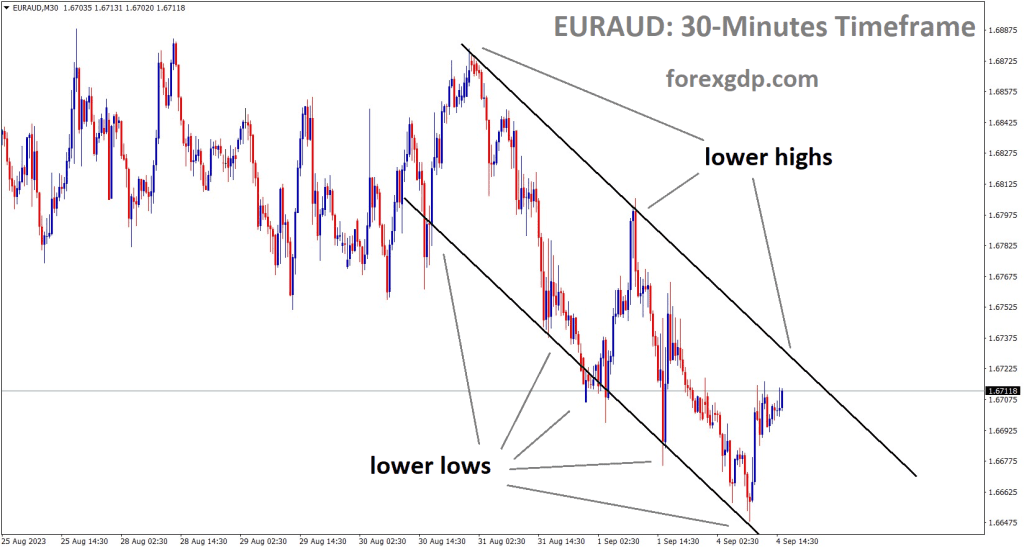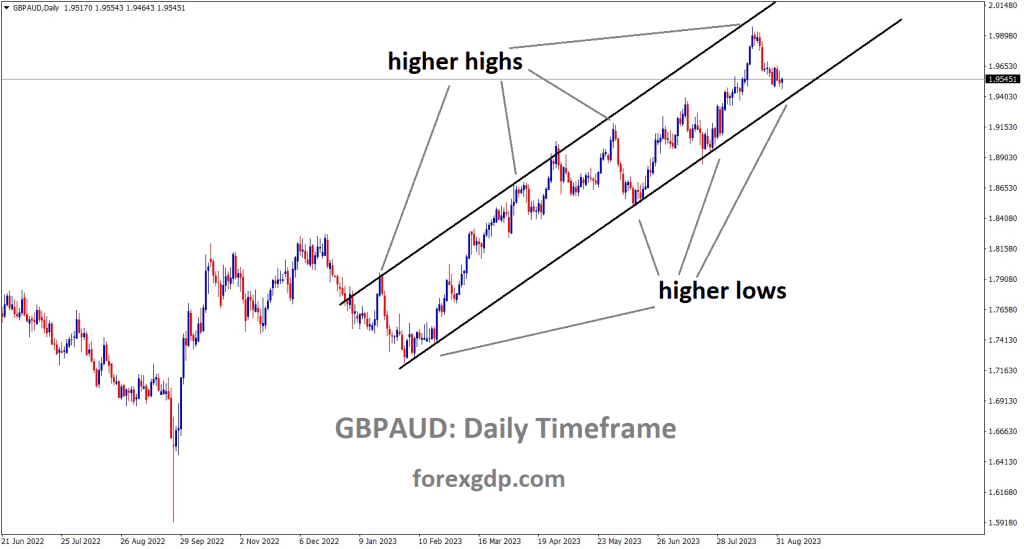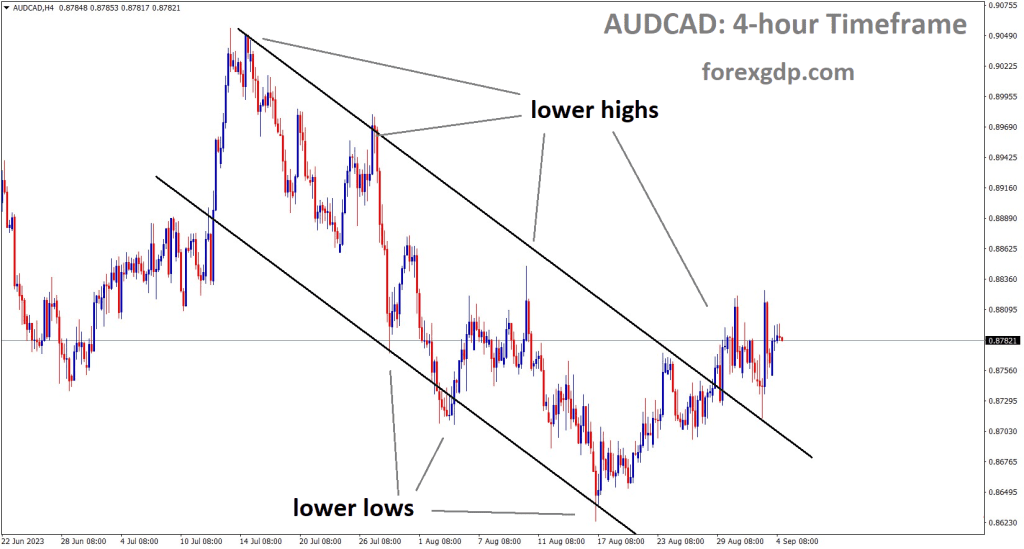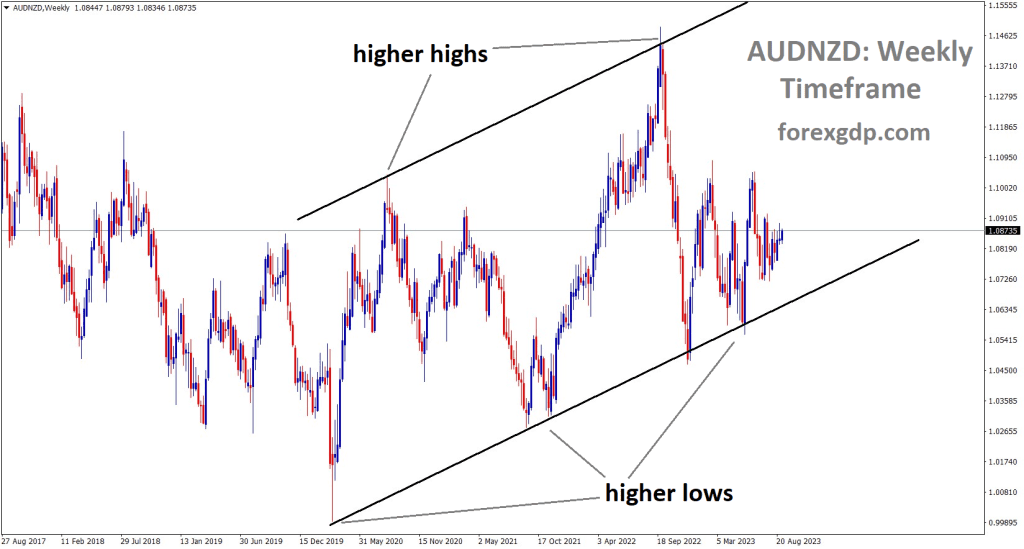Introduction
The actions of the Reserve Bank of Australia (RBA) in shaping monetary policy have long held critical significance for the nation’s economic path. The bank’s moves, especially those related to interest rates, are under the microscope—not just by experts in the financial world but also by everyday Australians. In this in-depth analysis, we’ll explore the existing economic landscape, what to expect from RBA’s Monetary policy announcements, the mood in the markets, and how these elements together determine Australia’s financial prospects.
Understanding Inflation, Interest Rates, and Economic Viability
Navigating the existing economic environment in Australia is a complex task, with inflation as one of its most urgent facets. As of the most recent data from July, the rate of inflation fell to 4.9%, hitting its lowest level in over a year. Despite this, it remains above the RBA’s ideal 2-3% range, presenting complications for policy crafting. While the reduction in inflation—from 5.4% the previous month to the current 4.9%—may seem like progress, it’s not necessarily a cause for immediate celebration either for the central bank or for ordinary Australians. Here’s the reason.
The Ripple Effect of Inflation on the Economy
Inflation is more than a mere statistic; it’s a crucial economic indicator with widespread ramifications. Elevated levels of inflation usually erode the buying power of consumers, making basic goods and services more costly. This may discourage consumer expenditure, which in turn affects business revenue and ultimately hampers economic advancement. This poses a complex puzzle for financial regulators like the RBA, who must work to control inflation while also promoting an environment conducive to economic growth.
Navigating the RBA’s Dual Objectives: A Delicate Balance
The Reserve Bank of Australia (RBA) has the difficult role of pursuing two primary goals: keeping inflation in check and stimulating employment and economic development. When inflation is high, the RBA finds itself in a dilemma. The conventional approach to mitigating inflation involves hiking interest rates, which usually curtails consumer borrowing and spending. This, in turn, eases demand, ultimately putting a brake on escalating prices. However, this measure can also hinder economic advancement and may even lead to job reductions, running counter to the RBA’s other major responsibility.
The Importance of Economic Expansion
Addressing inflation is vital, but so is spurring economic growth. An expanding economy usually equates to better living conditions, increased employment prospects, and additional budgetary leeway for public infrastructure and services. High-interest rates can dissuade both consumer expenditure and business investments, creating a domino effect that affects employment figures and overall economic growth. For Australia, given its modest population and its susceptibility to international market dynamics, maintaining strong economic growth is more than a goal; it’s essential.
The Global Context and its Challenges
The Australian financial landscape doesn’t exist in isolation. Factors like global economic shifts, trade disputes, and geopolitical happenings can also weigh in on Australia’s inflation and growth rates. Given the existing uncertainties in the global economy, the RBA must weigh its decisions not only in terms of their domestic implications but also in terms of their global impact.
The Pulse of Consumers and Enterprises
Rising inflation not only impacts the national economy but also affects the outlook of both consumers and businesses. Higher living costs resulting from inflation can dampen consumer confidence, hurting industries reliant on consumer outlays. From the business perspective, soaring costs can squeeze profit margins, potentially stalling investments and possibly leading to workforce reductions—thereby complicating the RBA’s task of maintaining stable employment and economic growth.
Navigating RBA’s Monetary Policy Decisions: Striking a Balance Between Security and Peril
As global and domestic financial circles eagerly await the Reserve Bank of Australia (RBA)’s forthcoming monetary policy update, the spotlight is squarely on the bank’s impending decisions. There’s a general belief among market observers that the RBA will likely leave the official cash rate unaltered at 4.10%. This presumption is not just speculative; it’s substantiated by key economic indicators, particularly the Consumer Price Index (CPI).
CPI’s Importance in Policy Formulation
The CPI is an essential gauge that tracks the average variation in prices that consumers incur for goods and services over a specified timeframe. For the RBA, this figure serves as an indispensable guide for gauging the inflationary climate. The latest data shows that the CPI has receded to 4.9% year-over-year, a decline from its prior 5.4%. Notably, this percentage also falls below the market’s anticipated forecast of 5.2%.
Decoding a Less-Than-Anticipated CPI
A CPI that falls short of expectations can be read in multiple ways. It might indicate that inflationary pressures are diminishing, though still at a level that exceeds the RBA’s acceptable range. It could also signify that consumer expenditures may be more subdued than previously anticipated, possibly due to higher inflation in preceding months.
In light of this backdrop, an RBA decision to hike the cash rate could be a courageous yet fraught choice. Upping the rates may suppress consumer spending even more, potentially counteracting the RBA’s goals of promoting economic growth along with price stability.
Prudent Patience: Why Maintaining the Status Quo is Probable
Given the declining yet still elevated inflation rate and a CPI below anticipated levels, the RBA could opt for a cautious stance. Holding the cash rate steady at 4.10% would afford the institution additional time to evaluate a broad set of economic conditions, including labor market trends, global economic landscapes, and wage growth before taking any dramatic steps.
Market Implications and What Lies Ahead
It’s crucial to remember that any modification to the RBA’s monetary policy affects more than just statistical graphs; it has real-world implications for businesses, investors, and households alike. A constant or unchanged rate often translates to a perception of stability, fostering a feeling of assurance among those in the financial markets. However, this doesn’t absolve the RBA of future challenges. Any decision it makes must be coupled with a well-structured communication plan that clarifies its reasoning and outlines potential paths for future monetary policies.
Market Feelings and Futures: How The Market Forecasts RBA Choices
Apart from dissecting the Reserve Bank of Australia’s (RBA) official statements and key economic metrics such as the Consumer Price Index (CPI), those in the financial markets frequently consult another valuable predictor of central bank moves: futures trading. Specifically, the ASX 30-day interbank cash rate futures serve as an informative lens into how the financial community is accounting for potential RBA policy adjustments in the future.

Decoding ASX 30-Day Interbank Cash Rate Futures
To begin, it’s important to clarify what these futures contracts signify. Essentially, ASX 30-day interbank cash rate futures are financial agreements that permit investors to speculate on the future standing of the interbank cash rate at a designated date. These rates often serve as a surrogate for the RBA’s official rate, as fluctuations in one often lead to changes in the other.
A Snapshot of Market Anticipations
The most recent information for September 2023 shows that these futures assign a 14% likelihood to a 25-basis point reduction in the cash rate, setting it at 3.85%. This marks a small climb from last week when the probability stood at 12%. While 14% might not appear as a robust endorsement for a rate cut, it’s not trivial either.
Guarding Against the Unknown
The minor increase from 12% to 14% is indicative of a market that’s cautiously weighing its options. This is because lower rates are generally perceived as economic stimulants, employed by central banks in response to weakening economic conditions. Given the unstable international financial scene and varying readings from economic gauges, the rise in probability suggests that a portion of market players are beginning to contemplate the prospect of a more accommodating RBA approach, even though the prevailing thought is that the cash rate will stay put.
Considering the Global Economic Backdrop
It’s also vital to include the larger worldwide economic setting, which might be feeding this reserved risk-mitigation strategy. Persistent geopolitical issues, trade conflicts, and the ongoing repercussions of the COVID-19 pandemic on international supply networks all add to a turbulent economic climate. These global elements may be motivating certain investors to slightly increase their stakes on a potential rate reduction, even when domestic indicators like CPI point to a stable situation.
The Role of Market Mood
Lastly, it’s important to note that while data from futures trading may not be a direct factor in RBA decisions, it does serve as a valuable barometer for market mood. Grasping this mood allows both the RBA and market actors to brace for a variety of outcomes, including unforeseen economic shocks or policy changes by other central banks that could reverberate through the world economy.
Specialist Insights: Varied Takes on the RBA’s Financial Direction
Forecasting the Reserve Bank of Australia’s (RBA) upcoming monetary policies can be like navigating a maze—especially when even experts in the field don’t agree. While there is some consensus regarding the short-term outlook, the long-term projections are more diverse. These opinions often stem from different readings of economic markers and strategic evaluations. Here we examine the perspectives of four premier financial organizations: Westpac Banking Corp, ANZ Research, Commonwealth Bank, and National Australia Bank (NAB).
Westpac Banking Corp Forecast: Holding Steady, Then Reducing Rates
Westpac’s financial experts anticipate that the current 4.10% cash rate will be maintained until this time next year. Where Westpac distinguishes itself is in its forecast for a sequence of rate reductions following this static period. This outlook suggests that Westpac sees a weakening economic landscape, potentially due to persistent inflation and a prospective global downturn. The institution seems to favor a prudent strategy, recommending that the RBA collect more data before recalibrating its position.
View from ANZ Research: Action Likely in Late 2024
ANZ Research also sees the cash rate staying at 4.10% for an extended duration, but they extend this period well into 2024. Notably, ANZ posits that a solitary rate reduction might take place in late 2024, depending on a variety of economic conditions, potentially including inflation aligning more favorably with RBA goals. This perspective underscores ANZ’s concentration on long-term economic stability for Australia, coupled with a willingness to see short-term inflationary spikes as temporary.

Commonwealth Bank’s Assessment: Targeting Q1 2024
Commonwealth Bank also agrees on a prolonged pause in rate alterations but narrows it down to a possible rate reduction in the first quarter of 2024, potentially in a March meeting. This degree of precision might be grounded in their study of economic cycles, expected global shifts, or even domestic economic trends in Australia. Commonwealth Bank appears to be sketching out a timeline that argues for a rate cut during this quarter to sustain economic vitality.
National Australia Bank’s Outlook: A Different Angle?
NAB presents a somewhat dissenting opinion, suggesting that while the cash rate will stay at 4.10% in the near term, it foresees an increase to 4.35% in November 2023. This projection indicates that NAB either senses more powerful inflationary forces or perhaps a sturdier economic situation that could withstand increased interest rates. Compared to the more accommodative positions of the other banks, NAB introduces an alternative narrative—one where monetary tightening, as opposed to loosening, could be on the RBA’s agenda.

Effects on the Australian Economy: A Complex Interplay
The monetary policy actions taken by the Reserve Bank of Australia (RBA) aren’t just about abstract figures; they have tangible repercussions that permeate various facets of the Australian economy. From affecting the job market to the cost of daily essentials, the influence of the RBA is expansive. Below, we explore these different aspects in detail.

Job Opportunities and Wage Increases
One of the RBA’s central objectives is to cultivate steady employment. The current policy rate, set at 4.10%, has a ripple effect on the hiring choices of businesses. Elevated interest rates generally result in increased financing costs for businesses, possibly leading to reduced hiring or even staff cuts. Conversely, a drop in rates could stimulate businesses to expand, potentially resulting in increased employment and wage boosts.
The relationship between interest rates and employment is intricate. Even if low interest rates lead to more hiring, this doesn’t necessarily result in substantial wage hikes. Particularly in an inflationary landscape, the real value of wages might plateau or even decline, notwithstanding any nominal wage enhancements. Thus, the RBA faces a challenging balancing act, weighing the urgency to rein in inflation against the need to stimulate job and wage growth.
Australian Dollar Variability
Another critical variable impacted by the RBA’s policy is the Australian dollar’s (AUD) value. Interest rate alterations often induce fluctuations in the currency’s value. For instance, the AUD recently depreciated, although interest rates remained stable. This could be attributed to numerous factors, like worldwide economic conditions, investor outlook, or anticipations of future actions by the RBA.
A less robust AUD presents a double-edged sword. On one side, it gives a competitive edge to exporters by making Australian products more economically appealing on a global scale. On the flip side, it escalates the cost of imports and foreign travel for Australians, thereby adding fuel to inflationary trends. This adds an extra layer of intricacy to the RBA’s policymaking considerations.
Equity Market Variability
Intriguingly, the equity market recorded growth, even as the RBA opted to hold its rate steady. Generally speaking, lower interest rates are beneficial for equities, as they result in reduced discount rates for future revenues, thereby enhancing the appeal of stocks. Yet, this relationship is far from linear. Numerous other elements, such as corporate performance data, international events, and general market sentiment, can also sway stock market movements.
In a climate with high interest rates, income-generating assets like bonds may garner more attention, driving investments away from equities. In contrast, in a setting with lower interest rates, equities might appear as more lucrative options for potential gains. Therefore, the RBA’s choices exert a multifaceted influence on investment strategies and corporate financing, which subsequently shape economic conditions.
Conclusion
As we’ve observed, the Reserve Bank of Australia plays a crucial role in steering the country’s economic trajectory. Balancing multiple objectives such as inflation control, job growth, and economic efficiency, the RBA navigates a complex decision-making landscape.
Given the plethora of economic uncertainties globally, the significance of the RBA’s policy choices cannot be overstated. Though experts might present diverse forecasts, the bank’s adherence to its core mission will inevitably steer its future actions.
The RBA’s policy adjustments don’t merely affect broad economic metrics; they also resonate at the individual household level, shaping the financial well-being of every Australian. Therefore, whenever an RBA announcement comes through, recognize that it transcends a mere change in interest rates—it has the power to affect the economic vitality of the nation as a whole.
Click here to read our latest article on Creating a Comprehensive 7 Step Trading
Frequently Asked Questions
- What is the present cash rate according to RBA policy? As of now, the RBA has set the policy cash rate at 4.10%.
- What is the inflation rate the RBA aims for? The Reserve Bank of Australia targets an inflation rate in the range of 2-3%.
- What was the state of inflation in Australia for the month of July? Australia experienced a decline in its inflation rate to a 17-month low, settling at 4.9% in July.
- What does the current Consumer Price Index (CPI) reveal? With a year-on-year CPI of 4.9%, the RBA appears to be exercising caution, suggesting that increasing the rate could be a risky move at this juncture.
- What do the ASX 30-day interbank cash rate futures currently indicate? As per data from September 2023, these futures point to a 14% likelihood of a 25-basis point rate reduction to 3.85% in the forthcoming RBA session.
- What is Westpac’s stance on the RBA’s monetary approach? Westpac’s analysis suggests that the RBA will maintain the 4.10% cash rate for an extended duration, followed by a series of rate reductions potentially beginning next year.
- What is ANZ Research’s forecast? ANZ Research projects a prolonged holding of the 4.10% rate, possibly leading to a rate cut around the end of 2024.
- What does Commonwealth Bank foresee? Commonwealth Bank envisions that the RBA will keep the 4.10% rate stable until the first quarter of 2024, at which point a rate cut could be on the table.
- What’s National Australia Bank’s (NAB) outlook? NAB anticipates an additional rate increase in November 2023, which would raise the cash rate to 4.35%.
- How do the RBA’s choices influence the economy of Australia? The policy decisions made by the RBA resonate throughout the economy, affecting aspects like job creation, salary trends, the valuation of the Australian dollar, and even fluctuations in the stock market.
Click here to read our learn more about RBA’s Monetary Policy